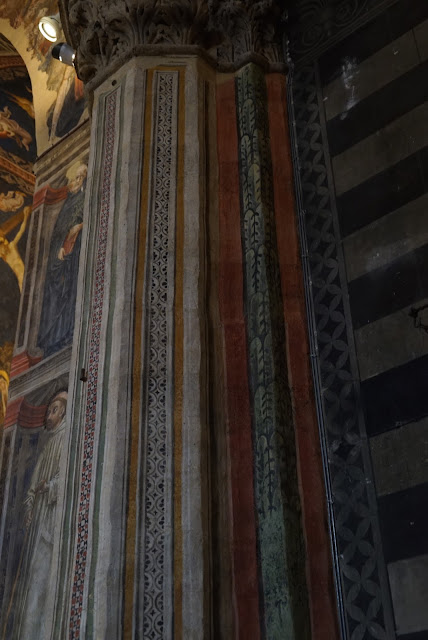The interior is striking, not the least for its over the top stripes (alternating bands of dark and light marble).
The cathedral is also known for its floor, which has elaborate carvings.
Ceilings and domes:
The music library ceiling (many beautiful chant books were on display):
The lower half of this photo is actually a fresco painted to look three dimensional:
A column from the Baptistry, located below:
And wonderful intarsia:
I think that this church was the most dazzling of all the ones we saw. In addition, next door there was a museum of works from the church, including even more dazzling Sienese paintings.
This "Maesta" from Duccio was formerly on the altar of the Duomo:
More from the museum:



























